3.5: Big Deal About Breakfast
- Page ID
- 2416
\( \newcommand{\vecs}[1]{\overset { \scriptstyle \rightharpoonup} {\mathbf{#1}} } \)
\( \newcommand{\vecd}[1]{\overset{-\!-\!\rightharpoonup}{\vphantom{a}\smash {#1}}} \)
\( \newcommand{\id}{\mathrm{id}}\) \( \newcommand{\Span}{\mathrm{span}}\)
( \newcommand{\kernel}{\mathrm{null}\,}\) \( \newcommand{\range}{\mathrm{range}\,}\)
\( \newcommand{\RealPart}{\mathrm{Re}}\) \( \newcommand{\ImaginaryPart}{\mathrm{Im}}\)
\( \newcommand{\Argument}{\mathrm{Arg}}\) \( \newcommand{\norm}[1]{\| #1 \|}\)
\( \newcommand{\inner}[2]{\langle #1, #2 \rangle}\)
\( \newcommand{\Span}{\mathrm{span}}\)
\( \newcommand{\id}{\mathrm{id}}\)
\( \newcommand{\Span}{\mathrm{span}}\)
\( \newcommand{\kernel}{\mathrm{null}\,}\)
\( \newcommand{\range}{\mathrm{range}\,}\)
\( \newcommand{\RealPart}{\mathrm{Re}}\)
\( \newcommand{\ImaginaryPart}{\mathrm{Im}}\)
\( \newcommand{\Argument}{\mathrm{Arg}}\)
\( \newcommand{\norm}[1]{\| #1 \|}\)
\( \newcommand{\inner}[2]{\langle #1, #2 \rangle}\)
\( \newcommand{\Span}{\mathrm{span}}\) \( \newcommand{\AA}{\unicode[.8,0]{x212B}}\)
\( \newcommand{\vectorA}[1]{\vec{#1}} % arrow\)
\( \newcommand{\vectorAt}[1]{\vec{\text{#1}}} % arrow\)
\( \newcommand{\vectorB}[1]{\overset { \scriptstyle \rightharpoonup} {\mathbf{#1}} } \)
\( \newcommand{\vectorC}[1]{\textbf{#1}} \)
\( \newcommand{\vectorD}[1]{\overrightarrow{#1}} \)
\( \newcommand{\vectorDt}[1]{\overrightarrow{\text{#1}}} \)
\( \newcommand{\vectE}[1]{\overset{-\!-\!\rightharpoonup}{\vphantom{a}\smash{\mathbf {#1}}}} \)
\( \newcommand{\vecs}[1]{\overset { \scriptstyle \rightharpoonup} {\mathbf{#1}} } \)
\( \newcommand{\vecd}[1]{\overset{-\!-\!\rightharpoonup}{\vphantom{a}\smash {#1}}} \)
\(\newcommand{\avec}{\mathbf a}\) \(\newcommand{\bvec}{\mathbf b}\) \(\newcommand{\cvec}{\mathbf c}\) \(\newcommand{\dvec}{\mathbf d}\) \(\newcommand{\dtil}{\widetilde{\mathbf d}}\) \(\newcommand{\evec}{\mathbf e}\) \(\newcommand{\fvec}{\mathbf f}\) \(\newcommand{\nvec}{\mathbf n}\) \(\newcommand{\pvec}{\mathbf p}\) \(\newcommand{\qvec}{\mathbf q}\) \(\newcommand{\svec}{\mathbf s}\) \(\newcommand{\tvec}{\mathbf t}\) \(\newcommand{\uvec}{\mathbf u}\) \(\newcommand{\vvec}{\mathbf v}\) \(\newcommand{\wvec}{\mathbf w}\) \(\newcommand{\xvec}{\mathbf x}\) \(\newcommand{\yvec}{\mathbf y}\) \(\newcommand{\zvec}{\mathbf z}\) \(\newcommand{\rvec}{\mathbf r}\) \(\newcommand{\mvec}{\mathbf m}\) \(\newcommand{\zerovec}{\mathbf 0}\) \(\newcommand{\onevec}{\mathbf 1}\) \(\newcommand{\real}{\mathbb R}\) \(\newcommand{\twovec}[2]{\left[\begin{array}{r}#1 \\ #2 \end{array}\right]}\) \(\newcommand{\ctwovec}[2]{\left[\begin{array}{c}#1 \\ #2 \end{array}\right]}\) \(\newcommand{\threevec}[3]{\left[\begin{array}{r}#1 \\ #2 \\ #3 \end{array}\right]}\) \(\newcommand{\cthreevec}[3]{\left[\begin{array}{c}#1 \\ #2 \\ #3 \end{array}\right]}\) \(\newcommand{\fourvec}[4]{\left[\begin{array}{r}#1 \\ #2 \\ #3 \\ #4 \end{array}\right]}\) \(\newcommand{\cfourvec}[4]{\left[\begin{array}{c}#1 \\ #2 \\ #3 \\ #4 \end{array}\right]}\) \(\newcommand{\fivevec}[5]{\left[\begin{array}{r}#1 \\ #2 \\ #3 \\ #4 \\ #5 \\ \end{array}\right]}\) \(\newcommand{\cfivevec}[5]{\left[\begin{array}{c}#1 \\ #2 \\ #3 \\ #4 \\ #5 \\ \end{array}\right]}\) \(\newcommand{\mattwo}[4]{\left[\begin{array}{rr}#1 \amp #2 \\ #3 \amp #4 \\ \end{array}\right]}\) \(\newcommand{\laspan}[1]{\text{Span}\{#1\}}\) \(\newcommand{\bcal}{\cal B}\) \(\newcommand{\ccal}{\cal C}\) \(\newcommand{\scal}{\cal S}\) \(\newcommand{\wcal}{\cal W}\) \(\newcommand{\ecal}{\cal E}\) \(\newcommand{\coords}[2]{\left\{#1\right\}_{#2}}\) \(\newcommand{\gray}[1]{\color{gray}{#1}}\) \(\newcommand{\lgray}[1]{\color{lightgray}{#1}}\) \(\newcommand{\rank}{\operatorname{rank}}\) \(\newcommand{\row}{\text{Row}}\) \(\newcommand{\col}{\text{Col}}\) \(\renewcommand{\row}{\text{Row}}\) \(\newcommand{\nul}{\text{Nul}}\) \(\newcommand{\var}{\text{Var}}\) \(\newcommand{\corr}{\text{corr}}\) \(\newcommand{\len}[1]{\left|#1\right|}\) \(\newcommand{\bbar}{\overline{\bvec}}\) \(\newcommand{\bhat}{\widehat{\bvec}}\) \(\newcommand{\bperp}{\bvec^\perp}\) \(\newcommand{\xhat}{\widehat{\xvec}}\) \(\newcommand{\vhat}{\widehat{\vvec}}\) \(\newcommand{\uhat}{\widehat{\uvec}}\) \(\newcommand{\what}{\widehat{\wvec}}\) \(\newcommand{\Sighat}{\widehat{\Sigma}}\) \(\newcommand{\lt}{<}\) \(\newcommand{\gt}{>}\) \(\newcommand{\amp}{&}\) \(\definecolor{fillinmathshade}{gray}{0.9}\)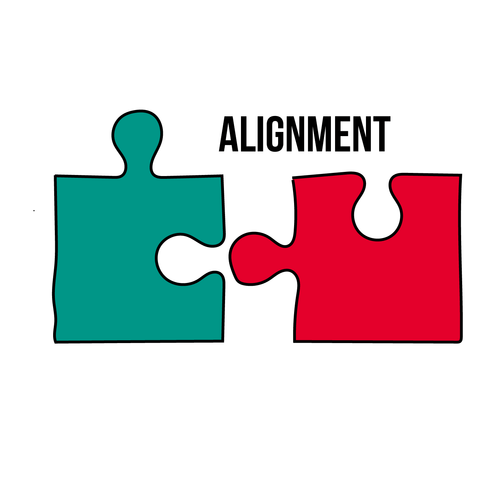
National Health Education Standards [NHES]
- 1.12.7 Compare and contrast the benefits of and barriers to practicing a variety of healthy behaviors such as eating a healthy breakfast.
- 7.12.2 Demonstrate a variety of healthy behaviors, such as eating a healthy breakfast, that maintain or improve the health of self and others.
Wellness Guidelines
- Increase frequency of breakfast consumption

- Instruction: In a group or think pair share format, have participants discuss the following questions. Acknowledge those who have progressed toward their goal(s) and encourage anyone who wants to change or modify their goal to get 1:1 support.
- Share: Let’s discuss our SMART Goals.
-
- How is it going with your current SMART goal?
- What are some ways you can improve progress toward your goal? (Grows)
- What are some ways you are doing well with progress towards your goal? (Glows)
Guideline: Increase Frequency of Breakfast Consumption
- Share: What guideline do you think is related to today’s lesson? Who has a SMART Goal related to this guideline?
- Instruction: Select one activity.
- Guideline Popcorn: The group lists all 8 guidelines rapidly in popcorn format.
- Guideline Charades: Divide participants into groups and assign each a guideline. Each group has to silently act out the guideline for the rest to guess.
- Two Truths and One Lie:
- Truth 1: Eating breakfast improves memory and attention [Gajre et al., 2008].
- Truth 2: Students who eat breakfast perform better in school and have higher test scores [Adolphus et al., 2013].
- Lie: Skipping breakfast is the best way to lose weight [Davis, 2005].
- Questions to discuss and/or journal:
- How many times a week do you usually eat breakfast? What do you usually eat for breakfast?
- Compare days when you eat breakfast versus days when you don’t. Is there a difference in how you feel? Which do you prefer?
- What are the things that may cause you to skip breakfast?

- Eating breakfast helps you perform and feel better throughout the day.

- Worksheets
- Slide presentation
- Cereals with added sugar labeling (ideally 3 different types of cereal that your participants are likely to eat) [Food and Drug Administration, n.d.
- Bowls
- Spoons
- Measuring Cups
- Paper Towels
- Paper
- Writing utensils
- Items to prepare a healthy, easy breakfast (smoothies, fruit, granola, etc.)
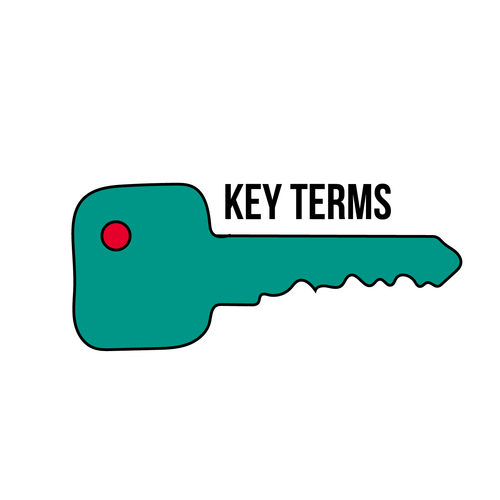
[As defined by USDA & HS, 2015; Michigan State University, 2013]
- Benefit: A good or helpful result or effect.
- Gram: A unit of mass. A gram of sugar 1/4 tsp by volume.
- Added sugar: Syrups, sugars, and other caloric sweeteners that are added as a sweetener in food products.
- Naturally occurring sugars: Sugars found naturally in fruit or milk are not added sugars.
- Fiber: Non-digestible carbohydrate found naturally in plants that help fill you up and go to the bathroom regularly.
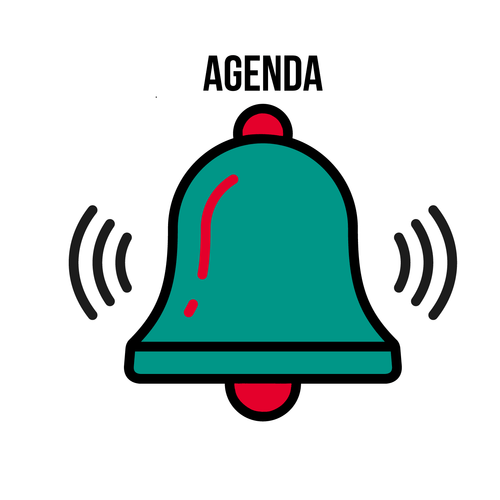
- Do Now
- Wake Up to Breakfast
- Breaking Down Cereals
- Planning My Ideal Breakfast
- Exit Ticket
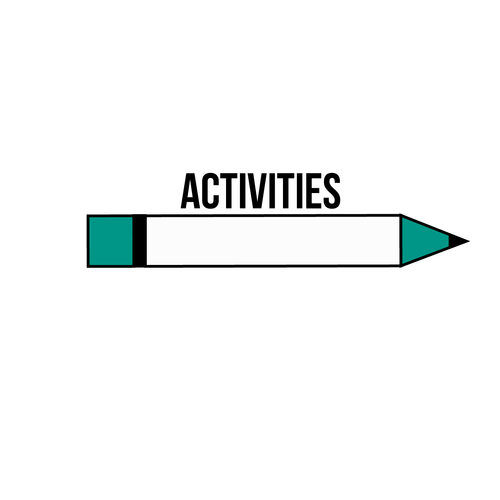
Do Now:
- Instruction:
- Have participants answer the following questions on their worksheet or by sharing out loud.
- If you had all the time in the world to make breakfast, what would you eat?
- Why might eating breakfast be good for you?
Good to Know: Wake Up to Breakfast
- Share:
- If you find yourself running out the door without eating breakfast, you may want to rethink your choice.
- Why start your day with breakfast? Breakfast provides you with many benefits. A benefit is a good or helpful result or effect.
- Breakfast provides you with a burst of energy in the morning and keeps up your energy throughout the day. It refuels your mind and body after a long night’s sleep.
- Breakfast can also give you the strength and endurance needed to perform your best when participating in physical activities or competing in sports [USDA, n.d.].
- It’s beneficial for your brain, memory, concentration, and mood, which help you perform better at work or in school [Gajre et al., 2008; Adolphus et al., 2013]. When you make eating breakfast a habit, you will have a better chance of doing better on your next test, performance, task, etc.
- Share:
- Did you know that lack of time is usually the biggest reason that people skip breakfast?
- While most of us have busy mornings with little spare time, it is still important to prioritize breakfast, even if it is something simple or prepared the night before.
- Don’t forget that eating breakfast can be fun and social! You can try gathering a group of friends to prepare breakfast the night before or to eat breakfast together in the morning before you start your day.
Real World Relevance: Breaking Down Cereals
- Set Up:
- Gather cereal (3 popular brands your participants may commonly eat), bowls, measuring cups, and measuring spoons.
- Share:
- Have you ever wondered how much cereal is considered a serving size? This activity demonstrates serving size of ready-to-eat cereal and the sugar content of your favorite brands.
- Often sugar is recorded in grams. What is a gram? A gram is a unit of mass. A gram of sugar is equal to about 1/4 tsp by volume [Michigan State University, 2013].
- Let's learn about recommendations for limiting intake of added sugars AND how many are in one serving of cereal. The American Heart Association recommends that women should limit added sugars intake to 6 teaspoons per day and men to 9 teaspoons per day [American Heart Association, 2017].
- Instruction:
- Choose three participants to sit at the table. Give each one a type of cereal and a bowl.
- Have each pour the amount of cereal they would normally eat in the morning.
- Ask each of them to read the nutrition label from their cereal box and pour out the size of one portion into a measuring cup.
- Then, have each participant measure the cereal in their bowl and determine how many servings they would be actually consuming.
- Ask the group if it’s more or less than what they expected.
- Share:
- Now we are going to look at the amount of added sugars in a single serving of cereal.
- Instruction:
- Note: Conversion: 4 grams of sugars = 1 teaspoon of granulated sugar (or 1 sugar cube).
- Ask or choose three new participants to volunteer.
- Have each participant identify the grams of sugars in a single serving of their cereal and share out with the rest of the group.
- Then, have each volunteer convert the grams of sugars into teaspoons and share out their calculations with rest of the group.
- Hold up the teaspoon to show participants what it looks like. Using measuring spoons, have each participant measure the amount of sugar per serving into a measuring cup.
- Remind participants that to find the total sugar they’re consuming when eating a bowl of cereal, they would need to multiply the sugar per serving with the total number of servings in their bowl.
- Share:
- Look at the amount of sugar per serving in these cups.
- Is anyone surprised by these amounts? Is this more sugar than you thought would be in one serving?
- The sugar in these cereals is added sugar and not the best choice. Added sugars are syrups and other caloric sweeteners used as a sweetener in other food products. Naturally occurring sugars such as those in fruit or milk are not added sugars [USDA & HHS, 2015].
- For a healthier breakfast choice, choose a cereal with less added sugar.
- For a more balanced meal, you can even add fresh fruit, like strawberries or bananas, to your breakfast cereal.
- Cereals that are high in sugar typically lack nutritional benefits such as fiber, vitamins, and minerals.
- Whole grain cereals with minimal sugar provide more fiber, which keeps us fuller for longer. Fiber is a non-digestible carbohydrate found naturally in plants that help fill you up and go to the bathroom regularly [USDA & HHS, 2015].
Hands-On: Breakfast Anytime, Anywhere
- Instruction:
- Divide participants into think-pair-share groups. Encourage them to get up out of their seats and move around to find their partner.
- In pairs, have participants brainstorm a list of breakfast ideas on their worksheets for three different scenarios:
- At home
- On-the-go
- At the local diner, deli, corner store or bodega
- After 5-8 minutes, have each group share out one idea.
- As participants share answers to the following questions, record answers on a projector, board or flipchart paper. Examples of breakfast options may include:
- At Home: low-sugar yogurts, smoothies, whole wheat toast or whole-wheat English muffin and a slice of reduced-fat cheese, whole-grain toaster waffles with peanut butter and banana, whole grain cereal with fresh fruit and reduced-fat milk.
- On the Go: low-sugar yogurts, cereal bars (granola or multigrain bars, etc.), single-serving, reduced-fat yogurt with a piece of fresh fruit (apple, orange, banana, pear, etc.), single-serving instant oatmeal in a cup with a piece of fresh fruit.
- At the Local Diner, Deli or Bodega: scrambled eggs on the whole- wheat toast (ask for veggies in the eggs), whole-wheat bagel with tomato and a small amount of light cream cheese, whole-wheat toast with a slice of cheese.
- Share out any responses not covered by participants.
- Prepare a healthy and easy breakfast meal with your participants, ideally using materials that they may have access to at home or at the local grocery or corner store. Examples may include a smoothie, granola, a fruit, peanut butter and banana sandwich, or yogurt with granola/fruit.
- Optional: Distribute recipe cards with breakfast ideas.
- Share:
- Even if you’re in a rush or are really busy, you can still make yourself a quick breakfast! Something simple is better than nothing.
- Also, although it is simple, this breakfast can still give you a burst of energy to start your morning!
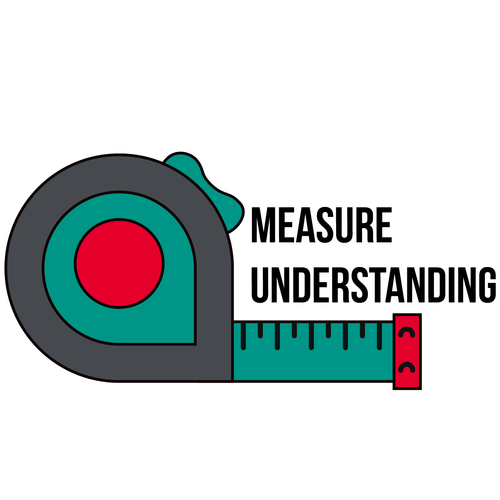
Exit Ticket:
- Instruction:
- List two reasons why it’s important to eat breakfast.
- What can you do to make sure you eat breakfast more often?
- Have participants write on their worksheet or share out loud the following question(s).
Bibliography
- Adolphus, K., Lawton, CL., & Dye, L. (2013). The effects of breakfast on behavior and academic performance in children and adolescents. Front Hum Neurosci. 7: 425. Retrieved From: https://www.ncbi.nlm.nih.gov/pmc/articles/PMC3737458/
- American Heart Association. (2017). Sugar 101. Retrieved From: http://www.heart.org/HEARTORG/Health...p#.Ws5bQdPwbBI
- Davis, JL. (2005). Lose weight: Eat breakfast. Retrieved From: www.webmd.com/diet/obesity/features/lose-weight-eat-breakfast#4
- Food and Drug Administration (n.d.) The New Nutrition Facts Label Examples of Different Label Formats://www.fda.gov/downloads/Food.../UCM511964.pdf
- Gajre, NS., Fernandez, S., & Vazir, S. (2008). Breakfast eating habit and its influence on attention-concentration, immediate memory, and school achievement. Indian Pediatr. 45(10): 824-8. Retrieved From: https://www.ncbi.nlm.nih.gov/pubmed/18948652
- Merriam-Webster Learner’s Dictionary. (n.d.). Benefit. Retrieved From: http://learnersdictionary.com/definition/benefit
- Michigan State University. (2013). How to convert grams of sugar into teaspoons. Retrieved from: http://msue.anr.msu.edu/news/how_to_...into_teaspoons
- United States Department of Agriculture. (n.d.). Benefits of breakfast. Retrieved From: healthymeals.fns.usda.gov/sites/default/files/uploads/1415_np_brkfst_BestPractices_Part4.pdf
- U.S. Department of Agriculture & U.S Department of Health and Human Services. (2015). Dietary Guidelines for Americans. Retrieved From: https://health.gov/dietaryguidelines...Guidelines.pdf

- U.S. Department of Agriculture. (n.d.). Choose breakfast cereals that are lower in added sugars. Retrieved From: https://fns-prod.azureedge.net/sites...FPCereal12.pdf
- Channel 4. (2015). How much sugar is there in your breakfast? Retrieved From: https://www.youtube.com/watch?v=zWBi8FyPdw8
- Clean & Delicious. (2017). 5 easy healthy breakfast ideas in under 5 minutes. Retrieved From: https://www.youtube.com/watch?v=0sO7LdVgGqc
- Soulfull. (2015). Why is a healthy breakfast the most important meal of the day? Retrieved From: https://www.youtube.com/watch?v=vQ3XNgoa8U8
This lesson was created in partnership with Albert Einstein College of Medicine Department of Epidemiology and Population Health with funding support by the National Institutes of Health NIDDK Grant R01DK097096.

